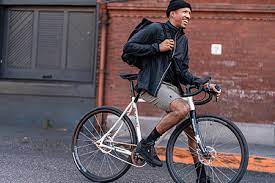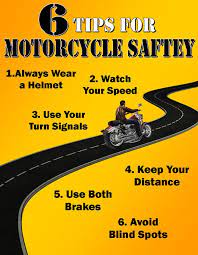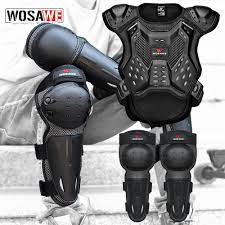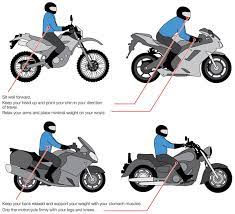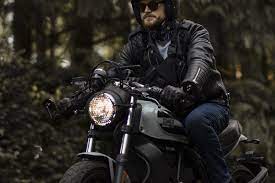Unleash Your Inner Rebel: Embrace the Style and Safety of Harley-Davidson Riding Gear
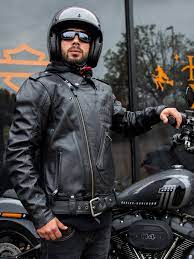
Harley-Davidson Riding Gear: Unleash Your Inner Rebel in Style
When it comes to motorcycling, one brand that has become synonymous with freedom, power, and style is Harley-Davidson. For decades, this iconic American motorcycle manufacturer has captivated riders around the world with its distinctive bikes. But Harley-Davidson is not just about the motorcycles themselves; it’s also about the lifestyle that accompanies them. And a crucial part of that lifestyle is the Harley-Davidson riding gear.
Harley-Davidson riding gear is more than just a fashion statement; it’s designed to provide riders with the utmost comfort, protection, and style. Whether you’re embarking on an exhilarating cross-country adventure or simply cruising through town on your Harley, having the right gear can enhance your riding experience in more ways than one.
Let’s start with safety. Harley-Davidson takes rider safety seriously, and their riding gear reflects that commitment. From helmets to jackets and gloves to boots, each piece of equipment is crafted with high-quality materials and built to withstand the demands of the road. The helmets are designed to provide optimal protection while offering excellent ventilation and a comfortable fit. The jackets are not only stylish but also equipped with armor inserts for impact protection. And the gloves and boots are engineered for maximum grip and durability.
But it’s not just about safety; Harley-Davidson riding gear also exudes style and individuality. The brand understands that riders want to express their personality through their gear, so they offer a wide range of options to suit every taste. From classic black leather jackets adorned with iconic logos to bold designs featuring vibrant colors and patterns, there’s something for everyone.
Moreover, Harley-Davidson riding gear is designed with functionality in mind. Riders need gear that can withstand various weather conditions while providing comfort during long rides. Many of their jackets feature removable liners or ventilation panels for adaptability, ensuring that you stay comfortable no matter the weather. The boots are built to provide excellent support and grip, while the gloves offer dexterity and protection without sacrificing style.
What sets Harley-Davidson riding gear apart is the sense of camaraderie it fosters among riders. When you see someone wearing a Harley-Davidson jacket or helmet, an instant connection is formed – a nod of recognition that says, “We belong to the same tribe.” It’s this sense of belonging that makes Harley-Davidson riding gear more than just apparel; it’s a symbol of unity and shared passion.
Whether you’re a seasoned rider or new to the world of motorcycles, investing in quality riding gear is essential. And when it comes to iconic style, unmatched quality, and a commitment to rider safety, Harley-Davidson riding gear stands out from the crowd. So, unleash your inner rebel, hit the open road with confidence, and let your Harley-Davidson gear be a testament to your passion for motorcycling.
Remember, it’s not just about the bike; it’s about embracing the lifestyle and expressing yourself through every aspect of your ride. Choose Harley-Davidson riding gear and experience the thrill of motorcycling in true rebel fashion.
Top 5 Advantages of Harley Davidson Riding Gear: Durability, Comfort, Style, Versatility, and Safety
Drawbacks of Harley Davidson Riding Gear: Expensive, Limited Selection, and Uncomfortable.
Durable
Durable: Harley-Davidson Riding Gear – Built to Last and Protect
When it comes to riding gear, durability is a key factor that every rider looks for. And when you choose Harley-Davidson riding gear, you can be confident that you’re investing in products made to withstand the test of time.
Harley-Davidson is renowned for its commitment to quality, and this extends to their riding gear. From jackets and pants to gloves and boots, every piece of gear is crafted from high-quality materials, ensuring longevity and superior protection against the elements.
One of the primary advantages of Harley-Davidson riding gear is its durability. The brand understands that riders need gear that can withstand the rigors of the road, whether it’s long rides under scorching sun or braving harsh weather conditions. That’s why they use premium materials like leather, textile blends, and reinforced stitching to create gear that lasts.
The use of high-quality materials ensures that your Harley-Davidson riding gear will hold up well over time. It won’t easily wear out or lose its shape after a few rides. This means you can rely on your gear to provide consistent protection ride after ride.
In addition to durability, Harley-Davidson riding gear offers excellent protection against the elements. Whether it’s wind, rain, or even extreme temperatures, their gear is designed to keep you comfortable while shielding you from external factors.
For example, their jackets are made with weather-resistant materials and feature adjustable closures and ventilation systems that allow you to adapt to changing conditions. This means you can confidently face unpredictable weather without compromising on comfort or safety.
Furthermore, the durable construction of Harley-Davidson riding gear ensures that it can withstand potential falls or accidents. The reinforced stitching and protective inserts in jackets and pants offer an extra layer of security should the unexpected happen.
Investing in durable riding gear not only provides peace of mind but also saves you money in the long run. Instead of having to replace worn-out gear frequently, you can rely on your Harley-Davidson gear to remain functional and protective for years to come.
So, whether you’re embarking on a cross-country adventure or simply cruising through your local streets, choosing Harley-Davidson riding gear means investing in products that are built to last. With their commitment to durability and superior protection against the elements, you can ride with confidence knowing that your gear will stand up to any challenge thrown your way.
Comfortable
Harley-Davidson Riding Gear: Experience Unparalleled Comfort on the Road
When it comes to long rides on your Harley-Davidson, comfort is key. That’s why Harley-Davidson riding gear is specifically designed to provide riders with unmatched comfort, ensuring that you can enjoy hours on the road without any discomfort or distractions.
One of the standout features of Harley-Davidson riding gear is its focus on comfort. Every piece of gear, from jackets to gloves and boots, is meticulously crafted with the rider’s comfort in mind. Adjustable straps allow you to customize the fit, ensuring that your gear fits snugly and securely without feeling restrictive.
Breathable fabrics are another key element of Harley-Davidson riding gear. Riding for extended periods can cause heat and sweat build-up, which can become uncomfortable and distracting. However, with Harley-Davidson gear, you don’t have to worry about that. The use of breathable materials allows air circulation, keeping you cool and dry even during hot summer rides.
Additionally, the gear is designed to provide freedom of movement. Whether you’re reaching for the handlebars or leaning into a curve, Harley-Davidson riding gear allows for unrestricted movement so that you can ride with ease and confidence. The jackets have strategically placed stretch panels or pre-curved sleeves to ensure flexibility without compromising protection.
The attention to detail in the design process ensures that every aspect of the gear contributes to overall comfort. From padded collars and cuffs for added softness against your skin to moisture-wicking liners that keep you dry during unpredictable weather conditions, Harley-Davidson riding gear prioritizes your comfort throughout your journey.
Comfortable riding gear not only enhances your overall experience but also allows you to stay focused on the road ahead. With distractions minimized and discomfort eliminated, you can fully immerse yourself in the joy of riding without any compromises.
So whether you’re embarking on a long-distance adventure or simply enjoying a leisurely ride, Harley-Davidson riding gear will keep you comfortable throughout your journey. With adjustable straps, breathable fabrics, and a focus on freedom of movement, this gear is designed to make your ride as enjoyable as possible.
Experience unparalleled comfort on the road with Harley-Davidson riding gear. Trust in its quality craftsmanship and attention to detail, and let it enhance your riding experience mile after mile.
Stylish
Stylish: Harley-Davidson Riding Gear – Safety Meets Fashion
When it comes to riding gear, one of the standout pros of Harley-Davidson is its undeniable style. Harley-Davidson riding gear offers riders the perfect blend of fashion and safety, allowing you to look great while keeping yourself protected on your ride.
Harley-Davidson understands that riders want to express their individuality and personal style through their gear. That’s why they offer a wide variety of styles to suit every taste. Whether you prefer the timeless appeal of a classic leather jacket or the sleek and modern look of mesh designs, Harley-Davidson has got you covered.
The brand’s iconic leather jackets are a symbol of rebellion and freedom. Crafted from high-quality materials, these jackets not only provide excellent protection but also exude a sense of rugged elegance. They are designed with attention to detail, featuring iconic logos and distinctive hardware that instantly make a statement.
For those seeking a more contemporary look, Harley-Davidson offers riding gear with modern mesh designs. These jackets combine functionality with style, providing maximum ventilation without compromising on safety. The mesh panels allow air to flow freely, keeping you cool during hot rides while still offering reliable protection.
But it’s not just about jackets; Harley-Davidson riding gear encompasses a range of other stylish options too. From helmets adorned with bold graphics to gloves featuring intricate designs, every piece is crafted with an eye for fashion. You can mix and match different elements to create your unique ensemble that reflects your personality.
The beauty of Harley-Davidson riding gear is that it allows you to ride confidently while looking effortlessly cool. Whether you’re cruising down the highway or making a grand entrance at a motorcycle event, you’ll turn heads with your impeccable style.
However, it’s important to note that style doesn’t come at the expense of safety. While Harley-Davidson riding gear may be fashionable, it never compromises on its primary purpose – keeping you protected. Each piece is designed with the utmost care, using durable materials and incorporating safety features like armor inserts and reinforced stitching.
So, if you want to ride in style without compromising your safety, Harley-Davidson riding gear is the perfect choice. With its wide range of styles, from classic to contemporary, you can find the perfect gear that not only reflects your personal style but also ensures your protection on the road.
Embrace the iconic Harley-Davidson look and feel as you ride confidently in your stylish gear. Let your passion for motorcycles shine through every aspect of your ride, from the roar of your bike to the fashion statement you make with your Harley-Davidson riding gear.
Versatile
Harley-Davidson Riding Gear: Versatile and Customizable for Your Style and Safety
When it comes to riding gear, one of the standout advantages of Harley-Davidson is its versatility. With a wide range of accessories available, including gloves, boots, and helmets, you have the freedom to customize your look while still prioritizing safety on the road.
Harley-Davidson understands that riders have their own unique style preferences and individual needs. That’s why they offer a diverse selection of riding gear that allows you to express yourself while ensuring you stay protected during your rides.
Let’s start with gloves. Harley-Davidson offers a variety of glove options designed for different riding conditions and personal preferences. Whether you prefer full-fingered gloves for added protection or fingerless gloves for a more relaxed feel, there’s a style that suits your taste. You can choose from different materials, such as leather or textile, depending on your comfort level and climate requirements.
Next up are the boots. Harley-Davidson riding boots not only provide excellent foot protection but also come in various styles to match your individual look. From classic black leather boots to more adventurous designs with buckles or laces, there’s something to suit every rider’s taste. These boots are built to withstand the demands of the road while offering superior grip and support.
And let’s not forget about helmets – an essential piece of riding gear when it comes to safety. Harley-Davidson offers a wide range of helmets designed with both style and protection in mind. You can find options that cater to different riding preferences, such as full-face helmets for maximum coverage or half-shell helmets for a more open feel. With various designs and colors available, you can find the perfect helmet that complements your overall look.
The beauty of Harley-Davidson riding gear is that it allows you to create a cohesive style from head to toe while ensuring your safety remains a top priority. You can mix and match different accessories to suit your personal taste and riding needs. Whether you prefer a classic, timeless look or a more contemporary and adventurous style, there’s something for everyone.
By offering such versatility in their riding gear, Harley-Davidson empowers riders to make choices that align with their individuality. It’s not just about safety; it’s about expressing yourself and feeling confident on the road.
So, if you’re looking for riding gear that not only keeps you safe but also allows you to showcase your unique style, consider Harley-Davidson. With their wide range of accessories, you can customize your look while enjoying the peace of mind that comes with wearing high-quality gear from a trusted brand.
Embrace the versatility of Harley-Davidson riding gear and hit the road in style, knowing that you’re protected and true to yourself.
Safety-focused
Safety-Focused: Harley-Davidson Riding Gear Keeps You Protected
When it comes to riding motorcycles, safety should always be a top priority. That’s why Harley-Davidson riding gear stands out as a pro in the world of motorcycling. Every piece of gear, from helmets to jackets and everything in between, is designed with safety as the utmost concern.
Harley-Davidson understands that riders need reliable and durable gear to stay protected on the road. That’s why their riding gear is meticulously crafted to meet or exceed industry standards for motorcycle protective wear. Whether you’re embarking on an adventurous journey or simply commuting through busy city streets, you can trust that your Harley-Davidson gear will keep you safe.
One of the key components of safety-focused design is their helmets. Designed with advanced materials and innovative technologies, Harley-Davidson helmets provide optimal protection for your head in case of an accident. They undergo rigorous testing to ensure they meet stringent safety standards, giving you peace of mind every time you hit the road.
In addition to helmets, Harley-Davidson jackets are also engineered with safety in mind. They are constructed using high-quality materials and often feature armor inserts strategically placed at impact zones to provide extra protection for your back, shoulders, and elbows. These jackets not only offer style but also give riders confidence knowing they have an added layer of safety while enjoying their ride.
Furthermore, gloves and boots by Harley-Davidson are designed to protect your hands and feet from potential injuries. The gloves offer excellent grip and dexterity while providing padding and reinforcement in critical areas. The boots are built for stability and durability, ensuring your feet stay protected even during long rides or unexpected situations.
By choosing Harley-Davidson riding gear, you can be confident that you are investing in equipment that meets the highest safety standards. Whether it’s a helmet engineered for impact absorption or a jacket with reinforced armor inserts, each piece is designed to keep you safe on the road.
So, no matter where your journey takes you, whether it’s a thrilling adventure or a daily commute, make safety a priority with Harley-Davidson riding gear. Ride with confidence, knowing that you are protected by gear that has been meticulously designed and tested to keep you safe in any riding situation.
Expensive
Expensive: A Consideration for Harley-Davidson Riding Gear
When it comes to Harley-Davidson riding gear, there is one aspect that some riders may find challenging: the price tag. It’s no secret that Harley-Davidson products, including their riding gear, can be quite expensive and may not fit within everyone’s budget.
Harley-Davidson has built a reputation for producing high-quality and stylish riding gear that reflects the brand’s iconic image. However, this level of quality and craftsmanship often comes with a higher price point compared to other brands in the market. While some riders are willing to invest in top-of-the-line gear, others may find it difficult to justify the cost.
It’s important to note that the higher price of Harley-Davidson riding gear is often a reflection of the brand’s commitment to using premium materials, advanced technology, and innovative design. Their gear is specifically engineered to provide maximum protection, durability, and style. However, these features come at a premium cost.
For riders on a tight budget or those who prioritize affordability over brand loyalty, there are alternative options available in the market. Many other reputable brands offer riding gear that provides excellent quality and safety features at more affordable prices. These alternatives can still offer adequate protection while being more accessible for riders with varying budgets.
It’s crucial for riders to consider their personal circumstances when deciding on purchasing Harley-Davidson riding gear. While it may be an aspirational choice for many motorcycle enthusiasts, it’s essential to weigh the benefits against the potential strain on one’s finances.
Additionally, it’s worth mentioning that Harley-Davidson occasionally offers promotions or discounts on their riding gear, which can make it more accessible during certain periods or events. Keeping an eye out for such opportunities could help mitigate the financial impact of purchasing their gear.
Ultimately, whether or not Harley-Davidson riding gear fits within your budget is a personal decision based on your priorities, financial situation, and commitment to the brand. It’s essential to explore all available options and make an informed choice that aligns with your needs and preferences.
Remember, riding gear is an investment in your safety and comfort on the road. While Harley-Davidson gear may come with a higher price tag, it’s essential to prioritize finding gear that meets your requirements and provides adequate protection, regardless of the brand.
Limited selection
Limited Selection: Exploring the Boundaries of Harley-Davidson Riding Gear
When it comes to Harley-Davidson riding gear, there’s no denying its iconic status and undeniable appeal. However, one drawback that some riders may encounter is the limited selection available compared to other brands. While Harley-Davidson offers a range of high-quality gear, finding the perfect fit or style can sometimes be a challenge.
Every rider is unique, with individual preferences and requirements when it comes to their gear. Whether it’s a specific size, a particular design, or specialized features, having options is crucial for finding the gear that suits you best. Unfortunately, due to the limited selection offered by Harley-Davidson compared to other brands, this process can be more challenging.
For those who prioritize a wide variety of choices, exploring different brands may be necessary. Other manufacturers in the market often offer extensive selections of riding gear, catering to diverse tastes and needs. They may provide a broader range of sizes and styles that better accommodate various body types and personal preferences.
However, it’s important to note that while the selection may be limited compared to other brands, Harley-Davidson riding gear still maintains its distinctive style and quality. The brand’s commitment to producing durable and stylish gear remains unwavering. So even if you face challenges finding the perfect fit or style within their offerings, rest assured that what they do offer is crafted with utmost attention to detail.
Additionally, many riders find solace in the sense of community fostered by wearing Harley-Davidson riding gear. The brand carries an undeniable legacy and an enthusiastic following worldwide. When you don their gear, you become part of a larger community united by shared values and love for motorcycling.
Moreover, despite any limitations in selection, there are ways to overcome these challenges when seeking out your ideal Harley-Davidson riding gear. Exploring different retailers or online platforms may increase your chances of finding a wider range of options. Additionally, engaging with fellow riders and seeking their advice or recommendations can prove invaluable in discovering unique pieces that may not be as widely known.
In the end, while the limited selection may present some initial hurdles, it’s important to remember that Harley-Davidson riding gear embodies a spirit of rebellion, freedom, and style that continues to captivate riders worldwide. It’s about finding the gear that resonates with your personal style and meets your functional needs, even if it requires a bit more effort.
So, embrace the challenge and explore the boundaries of Harley-Davidson riding gear. Let your passion for motorcycling guide you as you seek out the perfect fit and style. Remember, it’s not just about the gear; it’s about the experience of riding and being part of an enduring legacy that sets Harley-Davidson apart from the rest.
Uncomfortable
Uncomfortable: Addressing Comfort Concerns with Harley-Davidson Riding Gear
When it comes to riding gear, comfort is a key factor that can greatly impact a rider’s experience on the road. While Harley-Davidson is renowned for its iconic motorcycles and stylish apparel, some riders have expressed concerns about the comfort level of their riding gear.
It’s important to note that comfort is subjective and can vary from person to person. While many riders find Harley-Davidson gear comfortable and suitable for their needs, there are individuals who have reported discomfort during long rides. One common complaint is that the materials used in Harley-Davidson riding gear may not be as comfortable as those offered by other brands.
However, it’s worth mentioning that Harley-Davidson acknowledges the importance of rider comfort and continuously strives to improve their products. Over the years, they have made significant advancements in their gear technology to enhance both safety and comfort.
For riders who find certain aspects of Harley-Davidson riding gear uncomfortable, there are potential solutions. Firstly, it’s essential to ensure proper sizing and fit. Ill-fitting gear can cause discomfort regardless of the brand. Taking accurate measurements and consulting size charts can help ensure a better fit.
Additionally, exploring different options within the Harley-Davidson range might yield more comfortable alternatives. The brand offers a diverse selection of riding gear designed for various riding styles and preferences. Trying out different styles or models may lead to finding a more comfortable option that suits individual needs.
Another consideration is personal customization or modifications. Some riders choose to make adjustments or add additional padding or liners to enhance comfort in specific areas where they feel discomfort.
Lastly, it’s valuable to seek recommendations from fellow riders or consult with experienced professionals at authorized dealerships who can provide insights into potential solutions or alternative brands that might better suit individual preferences for comfort.
While it’s true that some riders have found certain aspects of Harley-Davidson riding gear uncomfortable, it’s important to remember that comfort is a subjective experience. What may be uncomfortable for one rider may be perfectly suitable for another. By exploring different options within the Harley-Davidson range, ensuring proper fit, and considering personal modifications, riders can address comfort concerns and find the right balance between style, safety, and comfort on their journey.

